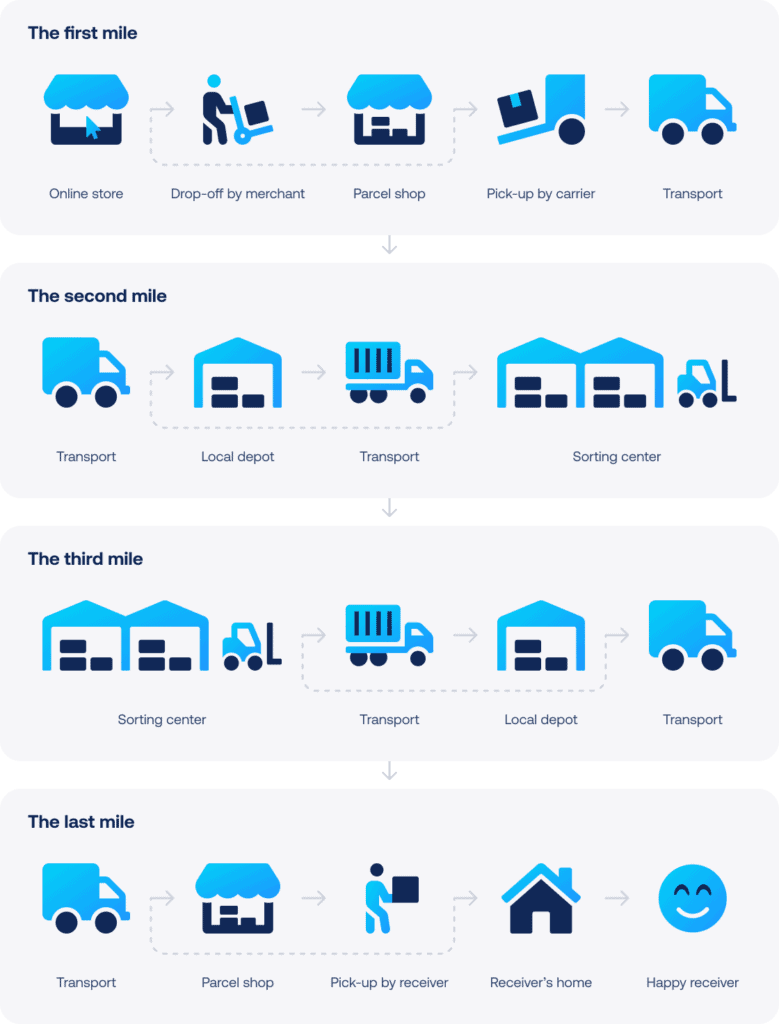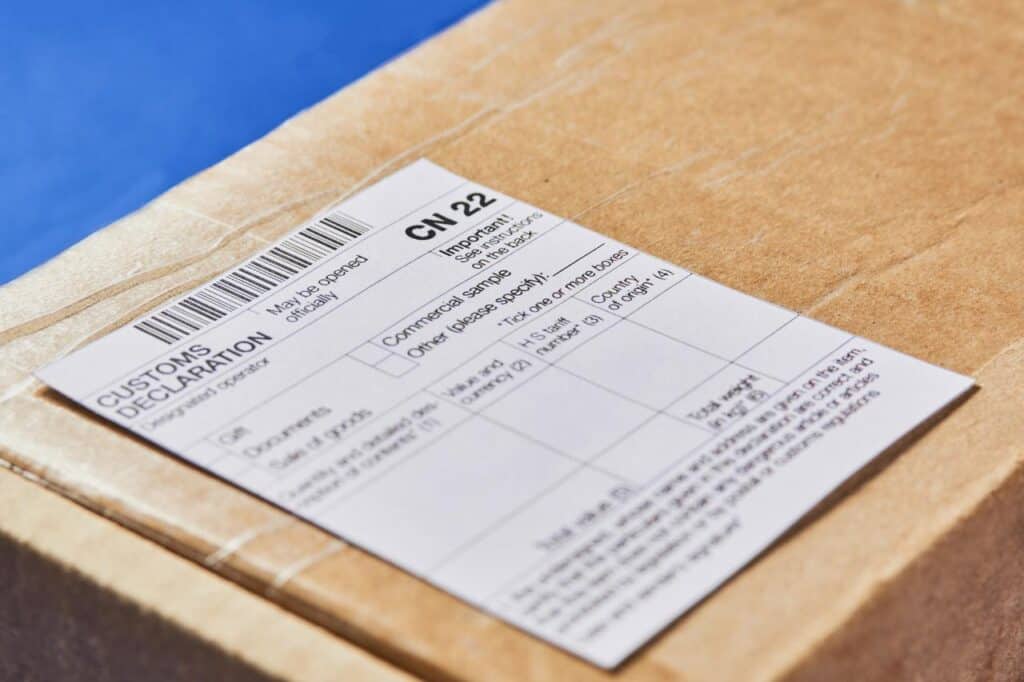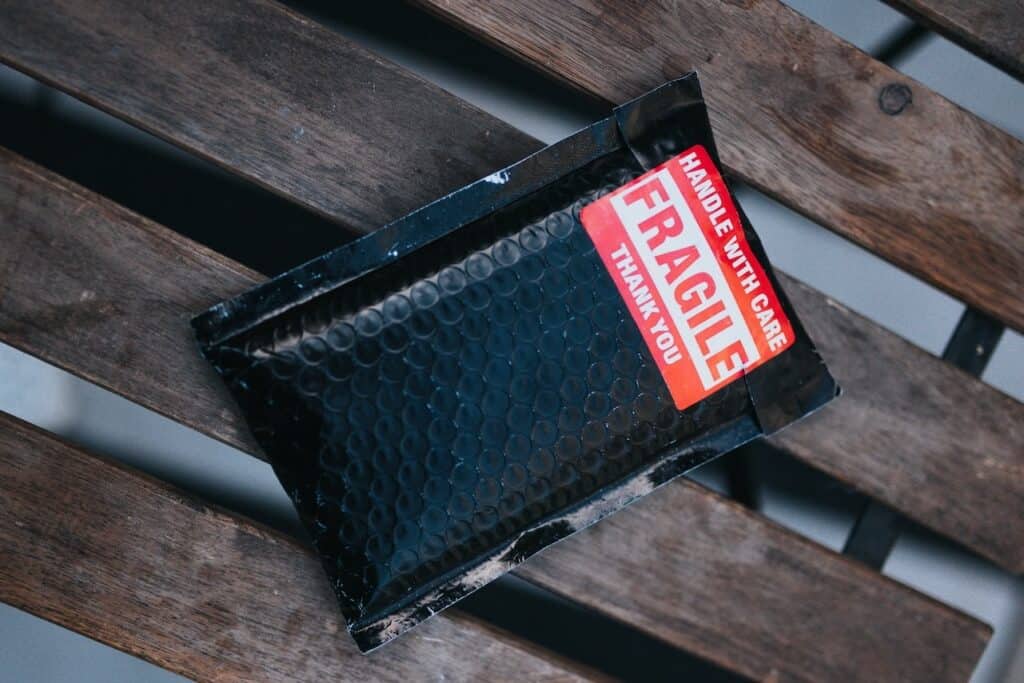Do you find yourself losing sleep over lost and damaged parcels, or surprised by unexpected surcharges? When shipping problems pop up, they can quickly derail your day and eat into your profits.
The good news? Most of these headaches are solvable with the right setup. In this guide, we’ll walk you through the most common problems with shipping, where they originate from, and offer straightforward, proven solutions you can act on today.
Where are my shipping problems coming from?
Increased demand and external disruptions contribute to the challenges faced in shipping. For example, there is an increased likelihood of lost parcels during peak season. While you can’t control what comes your way, you can make sure you’re not caught off guard when deliveries don’t go as planned. Being aware of the shipping process and the most common issues can help you handle them quickly or avoid them altogether.
What really happens during shipping
Shipping isn’t one-and-done after label printing. Your package goes from drop-off or pickup to local depots, sorting centers, and regional hubs before landing at the customer’s doorstep. Every stop adds potential for error — a label misread, a size mismatch, a lost parcel. In fact, our internal data shows that up to 5.8% of parcels face a potential issue or delay.

And customers? They expect smooth delivery, every time. An SMB Shipping Pulse Check survey revealed that 51% of shoppers would leave a bad review if a shipping issue isn’t resolved properly. That means every error is a risk to your reputation.
Let’s get into the most common pitfalls — and how you can stay ahead of them.
1. Surprise surcharges cut into your profits
You quoted €4 for shipping. Then you get hit with a €7 surcharge for “non-bendable” packaging. Ouch.
Why it happens: Shipping costs aren’t just about distance. Carriers calculate price based on a combination of package size, weight (actual vs. volumetric), delivery speed, and any special handling. If your packaging is slightly off-spec or the label is smudged, unexpected fees are triggered automatically during sorting.
What to do:
- Avoid costly shipping surcharges by auditing your packaging against your carrier’s size/weight and shape rules.
- Add a buffer to your shipping prices or free shipping threshold for special circumstances like seasonal surcharges or outlying delivery areas.
💡Tip: Use automation to assign carriers that fit best based on real-time pricing and conditions like the weight and value of the shipment.
2. Carrier overload during peak seasons
It’s the holidays. Orders are rolling in, but your trusted carrier’s sorting hub is backed up for days.
Why it happens: Peak periods like Black Friday or the end-of-year holidays stretch carrier networks thin. They often work at (or beyond) capacity, and a single disruption, like weather or staff shortage, can throw the entire schedule off. If you’re dependent on one carrier, you’re stuck.
What to do:
- Set order cut-off dates for your customers and communicate them clearly during peak periods.
- Enable multi-carrier shipping to have a plan B and avoid delays when your preferred carrier is disrupted.
💡Tip: Multiple carriers also mean more options and quicker delivery for your customers. Our research shows that about 32% of shoppers consistently opt for the fastest delivery. Think of it as having a fleet of carriers at your fingertips but without the usual expense and hassle.
3. Pickup no-shows waste your time
The team finishes packing hundreds of orders by 3 pm. The carrier pickup window comes and goes — no driver shows. Now the boxes are crowding your dispatch area, and your delivery window is shrinking.
Why it happens: Volume mismatches, booking errors, or logistical backlogs can all trigger no-shows.
What to do:
- Check if your shipping volume meets the requirements for a parcel pickup.
- Be sure to schedule collections in advance to allow for processing time.
💡Tip: Have a backup or alternative carrier in case the primary carrier faces issues.

4. Packages get stuck at customs
You’re ready to expand internationally. Then your first order gets held for 10 days, with no clear update from customs.
Why it happens: International shipments require more than just a label. Customs officials need accurate product details: descriptions, values, HS codes, and countries of origin. Incomplete or vague documentation leads to clearance delays or returns.
What to do:
- Add a customs cheat sheet to your shipping procedure. Clearly label product names, values, and origin using carrier-approved formats.
- Try a handy customs declaration tool. You’ll also need an HS code finder to fill this in properly.
💡Tip: If you’re ready to level up, look for international shipping software that allows you to generate compliant customs documents automatically.
5. Delivery delays create support chaos
Several orders are delayed again. Customers start flooding your inbox with “Where is my order?” messages, and your team ends up chasing updates instead of focusing on more important issues.
Why it happens: Carrier delays can be triggered by traffic, weather, labor shortages, or unexpected volume surges. But while the cause is outside your control, the impact (i.e. frustrated customers) becomes your problem.
What to do:
- Include delivery expectations and tracking links in your order emails.
- Prepare fast-response email templates to handle delays with empathy.
💡Tip: Proactive support builds trust, even when things go wrong. With our support automation tool, you can detect delivery issues before your customers do and contact carriers automatically. The back and forth with carriers is taken care of, so you don’t have to, and you get answers faster with a 3x faster first response time.
6. Packages get returned to sender too often
You shipped everything on time, but several orders bounce back to your workspace. Wrong address. Missed delivery. Customer unreachable.
Why it happens: Small issues like a missing apartment number or local formatting mistake (e.g. for international addresses) can invalidate a label. And if your customers don’t know when a package is coming, they might not be around to receive it.
What to do:
- Use third-party plugins or applications that help ensure your customers fill in the correct address at checkout.
- Check and note down the unique address format per country and per carrier.
- Send automatic tracking notifications to keep customers informed before delivery attempts.
💡Tip: Some carriers allow address modifications in early processing stages, while others restrict changes once in transit for security reasons. Check this information carefully. Flexibility depends on the service level and the carrier’s policies. Some may charge an extra fee.

7. Not enough compensation for shipping incidents
A €150 order disappears mid-transit. You’re legally obligated to send a new order or reimburse the purchase price, but the carrier won’t cover the full amount, and it takes an average of 20 days to complete an investigation.
Why it happens: Traditional carrier insurance usually only covers up to a certain amount and does not include the replacement of the product. And standard claims often involve long waits and partial reimbursements.
What to do:
- Use shipping insurance with better coverage, including the full sales price, as well as return shipping and reshipping.
- Automatically apply insurance to any order above a defined value threshold.
- To improve cash flow, choose solutions with quicker claims processing.
💡Tip: If you sell high-value or fragile goods, build insurance into your pricing model from the start to protect your profit and your reputation. Don’t wait until the peak season rush hits to start thinking about insurance!
8. Not every carrier fits your needs
You know that your business relies on your partnership with carriers. Without them, your business would suffer. But you keep experiencing the same shipping challenges.
Why it happens: Not all carriers are optimized for all needs. Some focus on fragile goods, others on volume. If your shipping mix doesn’t match your product type, weight, or destinations, you’ll eventually run into problems.
What to do:
- Review your shipping data: Where are you sending? What are you shipping?
- Compare carriers based on performance metrics, like speed, damage claims, and costs.
- Use a multi-carrier tool to match the best option to each order.
💡Tip: Revisit your carrier mix every quarter, especially before peak sales periods. When you have the right carriers to choose from, providing the best service to your customers not only becomes manageable, but it also opens up new possibilities for your business.

What others are doing: Less stress, better shipping
Shipping is complex, but it doesn’t have to be chaotic. By identifying your weak spots, automating smartly, and choosing the right carrier mix, you’ll reduce stress and keep your customers coming back. Here’s how Sendcloud helped these businesses solve their shipping problems:
- St Martin’s Coffee Roasters used Sendcloud’s automated address validation and customizable shipping rules to minimize admin time and get a -90% reduction in shipping errors.
- XXL Nutrition got +50% fewer label creation errors and saw a notable drop in delivery problems and “Where Is My Order?” inquiries from customers.
- Café Belleville experienced fewer shipping errors and significantly less manual work (-70% reduction in time spent creating labels) by automating their shipping process with smart shipping rules.
When things inevitably go wrong, you need a solution that gives you control and peace of mind — all in one place. Discover how Support Automation helps you get a better look at delivery problems and resolve issues faster.















